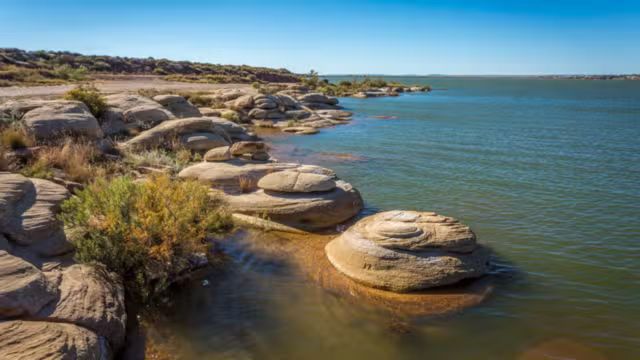Clovis, Portales, and neighboring communities have long relied on the Ogallala Aquifer, but excessive usage over the years has depleted this vital resource, prompting many New Mexico cities and villages to seek alternative solutions.
In this week’s Water Grows segment, we explore the potential impact of a 120-mile pipeline project on Ute Lake, the third-largest lake in New Mexico, and the surrounding villages.
“The lake is a defining feature of our community, setting us apart from struggling towns without such a natural asset,” remarked TJ Smith, a village counselor and elected official.
Expressing concerns about the project’s consequences, Rodney Paris, Logan Village administrator, stated, “We fear it will irreversibly harm our lake, adversely affecting our community in countless ways.”
Ute Lake spans 8,200 acres with a maximum capacity of 403,000 acre-feet. However, the lake’s water levels may decrease if the U.S. Bureau of Reclamation proceeds with its plan to pump water to Eastern New Mexico communities via the pipeline.
Smith emphasized the need for a sustainable solution, saying, “We urge them to explore affordable, long-term options to meet the water needs of their residents.”
Paris echoed these sentiments, warning, “Extracting water from the lake, equivalent to 16,000 acre-feet annually, particularly during droughts, will undoubtedly devastate our community and the lake.”
Having resided in Logan since 1980, Smith believes alternative strategies, such as groundwater extraction, could address the water needs of Eastern New Mexico. The economic importance of Ute Lake to Logan Village, drawing approximately 400,000 visitors annually, underscores the potential negative impact of water loss.
“We advocate for solutions akin to those implemented by CRMWA, T-Boone Pickens, and the Lake Meredith project, prioritizing sustainable groundwater solutions,” urged Smith.
Expressing firm opposition to the pipeline project, Paris stated, “We firmly oppose this project, considering it wasteful and impractical.”
Regarding the project’s timeline, completion and full operational status for water extraction from Ute Lake is estimated to be at least six years away, contingent upon future funding sources.




